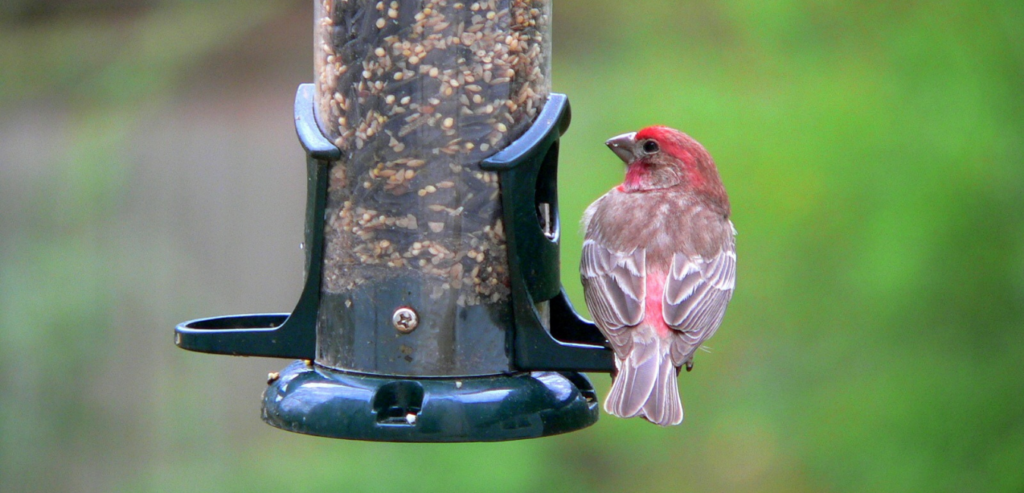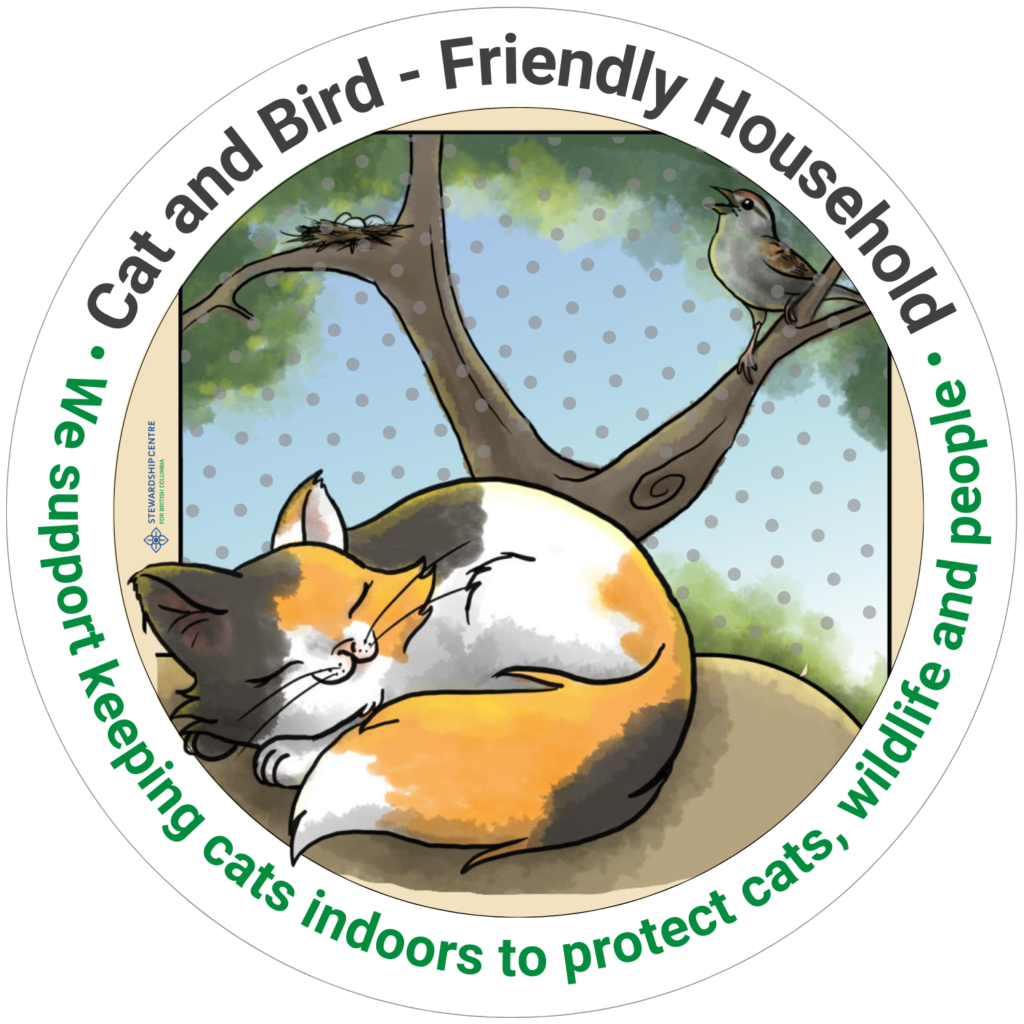Cats and Birds | Introduction to Bird Feeding
What do I need to know about feeding birds?
Bird feeding is popular
Bird feeding is an enjoyable and rewarding activity shared by half of all households in the USA (Orros and Fellowes 2015). Citizens set up bird feeders to engage with birds and give them nutritional support during the winter when the natural food supply is low. These feeders provide an amazing opportunity to observe a variety of species closely, learn about bird behaviour and bird identification, as well as simply enjoy having birds around the house.

Ecological risks of bird feeding
There are risks associated with feeding birds in urban areas like altering bird communities, their migration, and facilitating the spread of diseases. Long-term ecological consequences of bird feeding are not well documented and are a concern to avian ecologists and conservationists. In the article, “Should We be Feeding Birds and Other Wildlife?”, Isabelle Groc provides excellent background on the issue supported by scientific literature published worldwide. Isabelle discusses public interest in bird feeding practices, historical changes and problems associated with feeding in Europe, Australia and North America. She gives examples of changes and shifts in timing and migration patterns in bird populations, effects of feeding on species composition and interaction between birds at feeders and infection outbreaks associated with feeding stations.
More bird feeders, more bird collisions with windows
The risks to birds are not just from feeding stations, collisions with windows is one of the highest sources of direct human-related mortality for birds. Up to 42 million birds die by colliding with windows in Canada alone and the vast majority of these occur at homes, so the one or two birds per year that die at your windows really adds up. There is evidence that more collision deaths occur at homes with bird feeders, so it is our responsibility to take effective action to prevent these deaths.
To reduce potential risks of bird feeding, we encourage everyone to follow the best available feeding practices and be responsible and respectful when bird feeding.
5 things you need to know about bird feeding
Except for liquid feeders (e.g. hummingbird nectar feeders), the BC SPCA recommends only providing bird feeders between October and March. In the spring and summer months, there is lots of natural food for birds.
1. Where to put your bird station
- Place bird feeders within 1 m of windows to reduce collisions with windows
- Provide natural cover in your backyard for birds to hide from predators
- Keep an unobstructed view around feeders so that birds can detect predators
- Click to learn more…
2. What bird food to use
- Choose nutritionally appropriate food for visiting birds
- Use fresh seeds
- Supply grit for birds to aid them in food grinding
- Click to learn more…
3. How to clean your bird station
- Clean feeding station regularly (at least every 2 weeks)
- Refill and clean hummingbird feeders every 2-5 days
- Make sure the area below your feeder is clean of food waste and droppings
- Click to learn more…
4. How to make your bird feeder safe
- Treat your windows with effective bird collision deterrent products
- Keep feeders out of reach of free-roaming cats, raccoons, squirrels
- Click to learn more…
5. What else you can do to help birds
- Monitor your feeder regularly and contribute to citizen science through day-to-day observations
- Plant a variety of native plants and nectar-bearing flowers in your backyard
- Click to learn more…
To learn more about ways you can help birds, visit our Cats and Birds – Helping Birds page.









